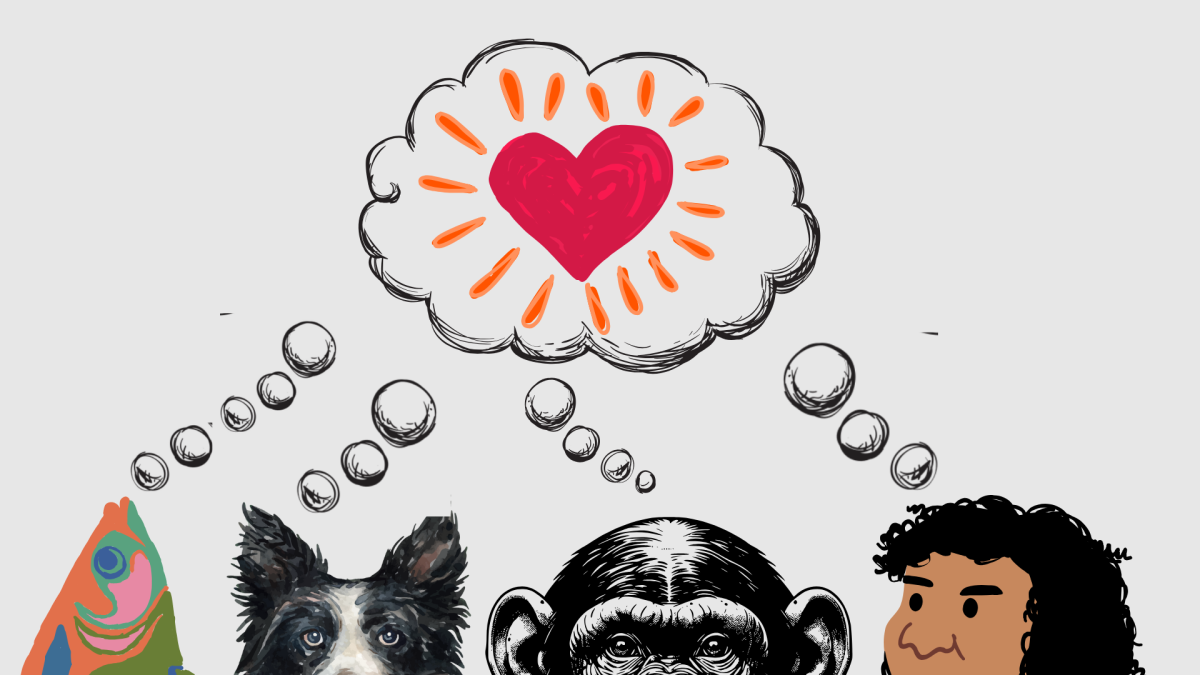The phrase “survival of the fittest” has long been synonymous with the theory of evolution, conjuring images of fierce competition and dominance. But Brian Hare, a renowned evolutionary anthropologist and cognitive scientist, is challenging this narrative with his concept of “survival of the friendliest.”
Hare, a professor of evolutionary anthropology at Duke University, led the NC State Philosophy Department’s annual Logic and Cognitive Science Initiative lecture, arguing that cooperation and friendliness — not brute strength — have been key drivers of evolutionary success in many species, including humans.
Hare’s lecture outlined how species such as flowering plants, emperor penguins and wrasse fish have evolved unique forms of cooperation based on friendliness. For example, emperor penguins survive the brutal Antarctic winter by huddling together for warmth, while cleaner wrasse fish swim into the mouths of predatory fish to clean their teeth — a relationship built on mutual benefit rather than fear.
Hare said perhaps the most compelling example comes from domesticated dogs. His research shows that dogs have evolved to read human gestures and motions in ways that the closest human primate relatives, such as chimpanzees, cannot. This ability stems from what Hare calls “self-domestication,” where natural selection favored wolves that were less fearful and more cooperative with humans thousands of years ago.
“One of the arguments about how dogs ended up being more cooperative and communicative is that they had a shift in how they developed, that an adult dog is more like a juvenile wolf, and that they’ve been basically frozen in a juvenile state in many regards,” Hare said.
NC State has been a key partner in Hare’s canine cognition and development research. Margaret Gruen, an associate professor at NC State’s College of Veterinary Medicine, has collaborated with Hare since 2018 on studies exploring how dogs develop social and cognitive skills over time.
Gruen said her background in veterinary medicine complements Hare’s expertise in evolutionary anthropology.
“Think about what are the medical conditions that might contribute, what are the changes that happen in the body and in the brain that might contribute to changes in behavior that we see,” Gruen said. “ … It can change their problem solving, it changes their motivation. Having that veterinary partnership, I think, really broadens the scope.”
One of their joint projects involved raising puppies at Duke University’s “puppy kindergarten,” where young dogs are studied intensively from eight to 20 weeks old.
Gruen led the physiological side of the research, measuring stress hormones like cortisol, while Hare focused on cognitive testing. Together, they examined how different rearing strategies affected puppies’ problem-solving abilities and social behaviors.
The puppy kindergarten project represents one of the first longitudinal studies of cognitive development in dogs. Researchers presented puppies with various challenges, such as finding hidden food using human gestures or solving puzzles where treats were placed in sealed containers, and observed how they approached these problems as they matured.
“It was to see if there was a way to combine temperament assessment and cognitive tests to help predict the puppies who would be successful as service dogs,” Gruen said.
The findings have implications beyond service dog training. By understanding how dogs perceive the world and solve problems, Gruen said she hopes to improve care for them.
Hare’s work has also had implications for understanding human evolution. Dogs’ ability to follow human gestures offers clues about how early humans may have developed similar skills to enhance cooperation within a group.
Hare also pointed to bonobos as an example of another aspect of social evolution in humans in practice. Often called “self-domesticated chimpanzees,” bonobos exhibit a cooperative and peaceful society starkly different from their close relatives, chimpanzees. Unlike chimpanzees, who engage in territorial conflicts and lethal aggression, bonobos prioritize collaboration and tolerance — traits that have helped them survive in their unique environment south of the Congo River.
“[Female] bonobos decided they were tired of male aggression,” Hare said. “They started to be friendlier with each other. They formed coalitions, and they could stop larger males from exerting force in the way that they had before.”
These coalitions allow females to prevent male aggression and create a social structure where cooperation is more rewarding than conflict. Bonobos even extend their friendliness beyond their immediate groups, forming alliances with unrelated individuals — a behavior rarely seen in other primates.
This behavior offers insights into human evolution as well. Like bonobos, humans developed the idea to form bonds with strangers who share a common identity, which Hare called the “in-group stranger” phenomenon.
“We have a new social category that no other species has: It’s the in-group stranger,” Hare said. “It’s somebody that we recognize as part of our group, but we’ve never met them before. You today are gonna meet somebody, or maybe this week, that you didn’t know, and you instantly will be searching for the group that you see yourself in, that they also fit in. No other species does that, and it’s what allows humans to be so powerful.”
Hare said this ability to connect with others has enabled humans to build large-scale cooperative societies, innovate rapidly and adapt successfully over time. However, he noted the paradox of human friendliness: While it fosters deep bonds within groups, it can also lead to cruelty toward those perceived as outsiders.
Hare said studying cooperation in species like dogs and bonobos could offer insights into building a more inclusive future.
“If dogs and bonobos can do it, I think we can too,” Hare said.








